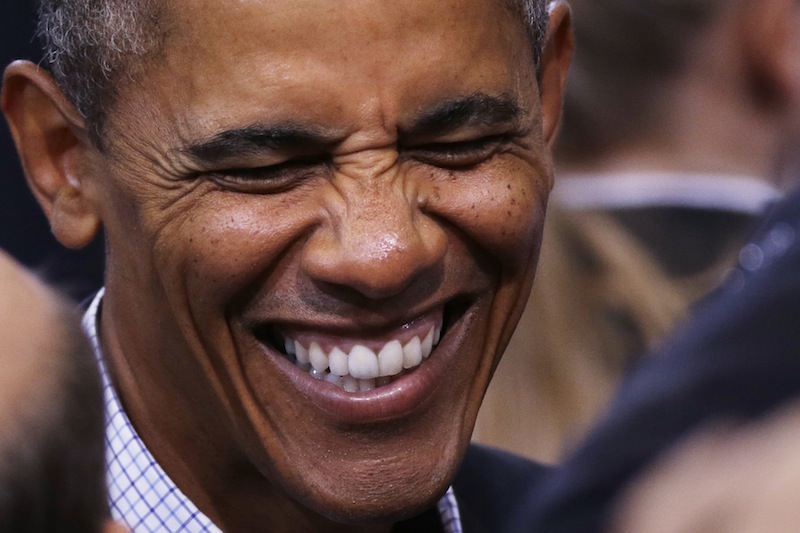The main takeaway from an exhaustive new study of premiums on the Obamacare health insurance marketplaces: They’re generally going to be lower than expected, undercutting the persistent claims of “rate shock” by conservatives.
Marketplaces premiums are coming in below initial estimates, said the nonprofit, nonpartisan Kaiser Family Foundation in a new report released Thursday.
The expected monthly premium for a 40-year-old adult purchasing a silver-level plan (the baseline, which covers 70 percent of costs) on a marketplace had been $320, according to previous projections from the Congressional Budget Office. But in 15 of the 18 regions studied by Kaiser, the average premium will be below that — thus the study’s conclusion that the prices are going to be lower than anticipated.
“While premiums will vary significantly across the country, they are generally lower than expected,” the authors wrote.
The study does not compare marketplace premiums with current prices in the individual insurance market. Instead, that conclusion is based on how released prices are comparing to previous projections for coverage costs under Obamacare. It follows a report last week by RAND, which suggested that claims of premium increases had been overstated.
If Kaiser’s estimates bear out, it could be a big blow to one of the main conservative talking points against the Affordable Care Act: rate shock. Everybody from House Republicans to think tank types like the Manhattan Institute’s Avik Roy and the Heritage Foundation have been warning that consumers would see skyrocketing prices under the law.
“Higher health care premiums are the last thing single young adults and working families can afford,” the House Energy & Commerce Committee wrote in a March 2013 report purporting to demonstrate rate shock under the ACA. “Yet contrary to what the president promised, that is exactly what Obamacare is projected to do.”
The CBO had previously estimated that Obamacare would increase premiums slightly overall. So while the Kaiser study avoids direct comparisons with current prices, its finding that premiums are coming in below the CBO’s projections calls the “rate shock” claims into question.
There is substantial variation across the country, though, as noted by the authors. For example, a silver-level plan for a 40-year-old adult in Portland will cost $201 (before any of the ACA’s cost-sharing subsidies kick in). The same plan for the same person would cost $413 in Burlington, Vt. The regional variations can be traced in part to geographic differences in prices for medical services, according to the study.
And what about the key young adult demographic? That’s been a particular focal point for both sides: The White House needs them to sign up for coverage to make the law’s finances work, while Republicans have bemoaned that they will be subsidizing coverage for older and sicker people.
Silver-level plan premiums for a 25-year-old would be below $200 before subsidies in seven of the 18 areas studied by Kaiser. There are again, however, a couple areas where premiums would approach and exceed $400: Burlington and New York City. There is still a general consensus among experts that some young adults will pay more than they do now — the Kaiser study suggests, though, that it won’t be as much more as some had feared.
The U.S. Department of Health and Human Services pointed to the Kaiser report as another example of the ACA’s upside, less than a month before the marketplaces are slated to open.
“Competition and transparency in the marketplaces are consistently leading to premiums that are lower than expected, and for those who qualify for a tax credit costs will be even lower,” HHS spokeswoman Joanne Peters said in a statement. “When Americans shop in the marketplace, they will be able to compare plans that have historic consumer protections side by side and find the one that fits their needs and budget.”
Below is the full study.









